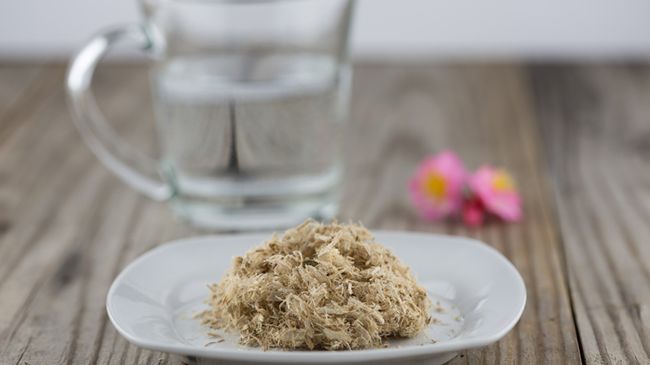
It may have a strange name but it is a powerhouse of goodness and a great natural detangler for your tresses.
What is slippery elm?
Slippery elm (Ulmus fulva“> is a small tree native to eastern Canada and eastern and central United States. Most commonly found in the Appalachian Mountains, it has a reddish brown truck with grayish white bark on the branches. The inner bark is where you will find its medicinal value, which is collected in spring from the bole of larger branches, dried, and powdered.
For centuries Native Americans have used slippery elm as an herbal remedy for wounds, boils, ulcers, burns, and skin inflammations. The University of Maryland Medical Center has also been used orally to relieve coughs, diarrhea, sore throats, and stomach issues. Drugs.com says it was not just used for medicinal purposes by the Native Americans, as it was also useful for building canoes, baskets, and shelter.
How to buy slippery elm
Slippery elm is made into a powdered bark that’s sold in two forms: a coarse powder for use as poultices and a fine powder for making a mucilaginous drink. The powdered form turns into a very slippery gel when mixed with water to make mucilage. Mucilage is a thick, glutinous substance related to the natural guns and is usually comprised of proteins, polysaccharides, carbohydrates, hexose, pentose, and methylpentose.
Benefits of slippery elm for hair
- Calcium help to strengthen the body and hair.
- Amino acids, which are the building blocks of proteins, encourage the growth of strong, healthy hair. They create red blood cells, which in turn deliver nutrients and oxygen to the hair follicles.
- Iodine is important in a properly functioning thyroid gland, and an iodine deficiency is a common cause of hair loss among women. According to the University of Michigan Health Systems, hypothyroidism cause by iodine deficiency may result in dry, coarse hair.
This slippery substance is highly effective in hair care, especially for curlies, as it is an amazing natural detangler. With the high content of procyanidins, nutrients, fatty acids (oleic acid and palmitic acid“>, and plant sterols, this wonder is an asset to our tresses. With the aid of water, slippery elm can move between hair fibers, where the slimy consistency makes the strands more slippery. Once in between the hair strands, mucilage temporarily weakens strand cohesion and allows the strands to glide effortlessly pass each other. This allows for easier separation and removal of shed hairs.
How to use slippery elm on hair
Slippery elm is great as a water-based leave-in conditioner, moisturizing hair cream, and a detangling spray. With the procyanidins, slippery elm improves the strength of hair and makes it tensile. The inner bark is great for treating dry, dull, and damaged strands. It is used for removing dandruff, making hair smoother, and adding volume. If you are really into DIY then you would love these recipes below:
Slippery Elm & Marshmallow Root Leave-In For Fine Hair
- 1 tbsp. slippery elm
- 3 tbsp. marshmallow root
- 3 cups distilled water
- 1 tbsp. aloe vera gel
- 15 drops lavender essential oil
- 15 drops lemongrass essential oil
- 20 drops vitamin E oil
Combine the distilled water, slippery elm, and marshmallow root, and boil on low to medium heat for 15 min. Allow to cool and strain herbs. Fill 1/3 of spray bottle with distilled water and add strained herb mixture. Add aloe vera gel to the oils and shake well.
DIY Leave-In Detangling Spray with Marshmallow Root & Slippery Elm
Product recommendations
If you’re not the DIY type, you can always purchase ready-made products with slippery elm in it.
- NaturelleGrow Marshmallow Root, Slippery Elm Bark & Cinnamon Deep Conditioner
- SheaMoisture Coconut & Hibiscus Kids Curling Butter Cream
- Curl Junkie Curl Assurance Smoothing Lotion
- SheaMoisture Raw Shea Butter Extra-Moisture Detangler
- Kinky-Curly Knot Today







Have you used slippery elm on your hair?
This article has been updated.








